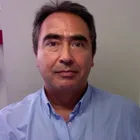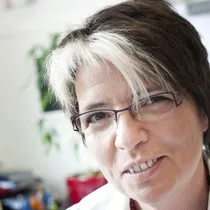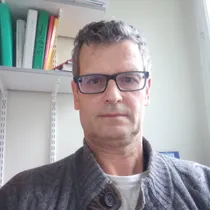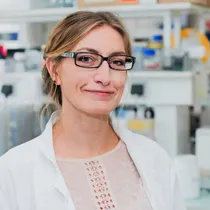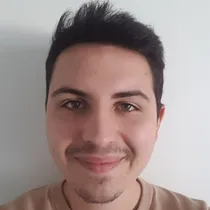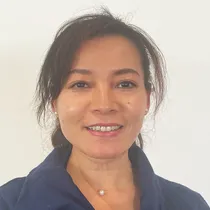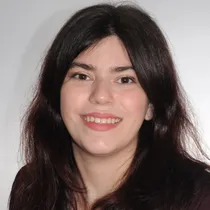Presentation

Our team develop new antitumoral therapies associated to radio- and/or chemo-therapy to fight cancer resistance to treatment while limiting adverse effects.
New small molecules named DBAit that inhibit major DNA Repair pathways
During these last years we have:
- Analyzed the mechanism of action of DBait (short double-stranded DNA mimicking double-strand break).
- Developed derived Dbait molecules with a cholesterol (AsiDNA) to facilitate cells penetration without any transfection agent and studied the molecular mechanisms that determine the specificity of AsiDNA for tumor cells (sparing healthy tissues).
- Demonstrated the clinical potential of the AsiDNA in a first-in-man clinical trial (in association with radiotherapy to treat melanoma in transit).
- Developed protocols of AsiDNA in association with chemotherapy (mainly 5-FU, Carboplatin, Irinotecan, Doxorubicin) in solid tumors (colon cancer, hepatocarcinoma, breast cancer) and in association with radiotherapy or chemotherapy (etoposide, cyclophosphamide (4-HC), and vincristine sulfate) in hematologic malignancies
- Tested protocols of AsiDNA in association with poly(ADP-ribose) polymerase inhibitors and validated the concept of the synthetic lethality induced by targeted combined therapies.
In collaboration with ONXEO (www.onxeo.com), the team prepares next clinical trial to systemically administrate AsiDNA in patients with solids tumors (planned trial start in 2019).
Identification of tumor sensitivity biomarkers to antitumoral treatment (i.e AsiDNA)
The survival of cells suffering spontaneous genetic instability, a common feature among tumor cells, depends on the efficiency of DNA repair. We have confirmed that this intrinsic characteristic of tumors and metastases is a prerequisite for the sensibility to AsiDNA to occur. We also showed that the presence of micronuclei in tumor cells from biopsies could be a good prognosis of the response to the AsiDNA treatment. The study of the feasibility and biodistribution of this biomarker in various types of tumors in clinic is in progress.
Development of new modalities of radiotherapy
- The Ultrahigh dose-rate irradiation (FLASH)
The V. Favaudon’s team at Institut Curie published in 2014 the results of a long-standing investigation carried out in vivo, demonstrating for the first time that FLASH irradiation spares normal lung tissue from radioinduced fibrosis whilst leaving the anti-tumor efficiency unchanged.
We are currently working at decrypting and the physical, physico-chemical and biological “parameters” (optimum doses and dose-rates, oxygenation, physiological compartments, molecular and cellular pathways…) that account for normal tissue sparing from radiation toxicity. We focus our efforts to enhance our knowledge on the effects of FLASH radiation on normal tissues from both biological and technological sides and bring FLASH radiotherapy to the clinic.
- The cold plasma
Cold atmospheric pressure plasma (CAPP) is an ionized gas obtained at atmospheric pressure and room temperature and is used for biomedical applications such as healing, sterilization and decontamination. CAPP is composed of a mixture of reactive oxygen and nitrogen species (RONS), free radicals, electric field, photons, excited atoms and molecules. Part of the team, in a strong and efficient collaboration with physicists of plasma (LPGP, Orsay) who provided us a Helium-based plasma device, exploits these properties to target and eliminate in vitro and in vivo tumor cells.
***
Our fundamental projects are conducted to understand the molecular effects of the treatments in cancer cells and at the preclinical level by developing animal models and setting coherent protocols of treatments in view of future clinical applications.
These projects are part of a local network organized on the Saclay University campus the AMI NanoTheRad (https://www.universite-parissaclay.fr/fr/recherche/projet/nanotherad#presentation-3553) and a European network ITN-Radiate (www.radiate.eu).


